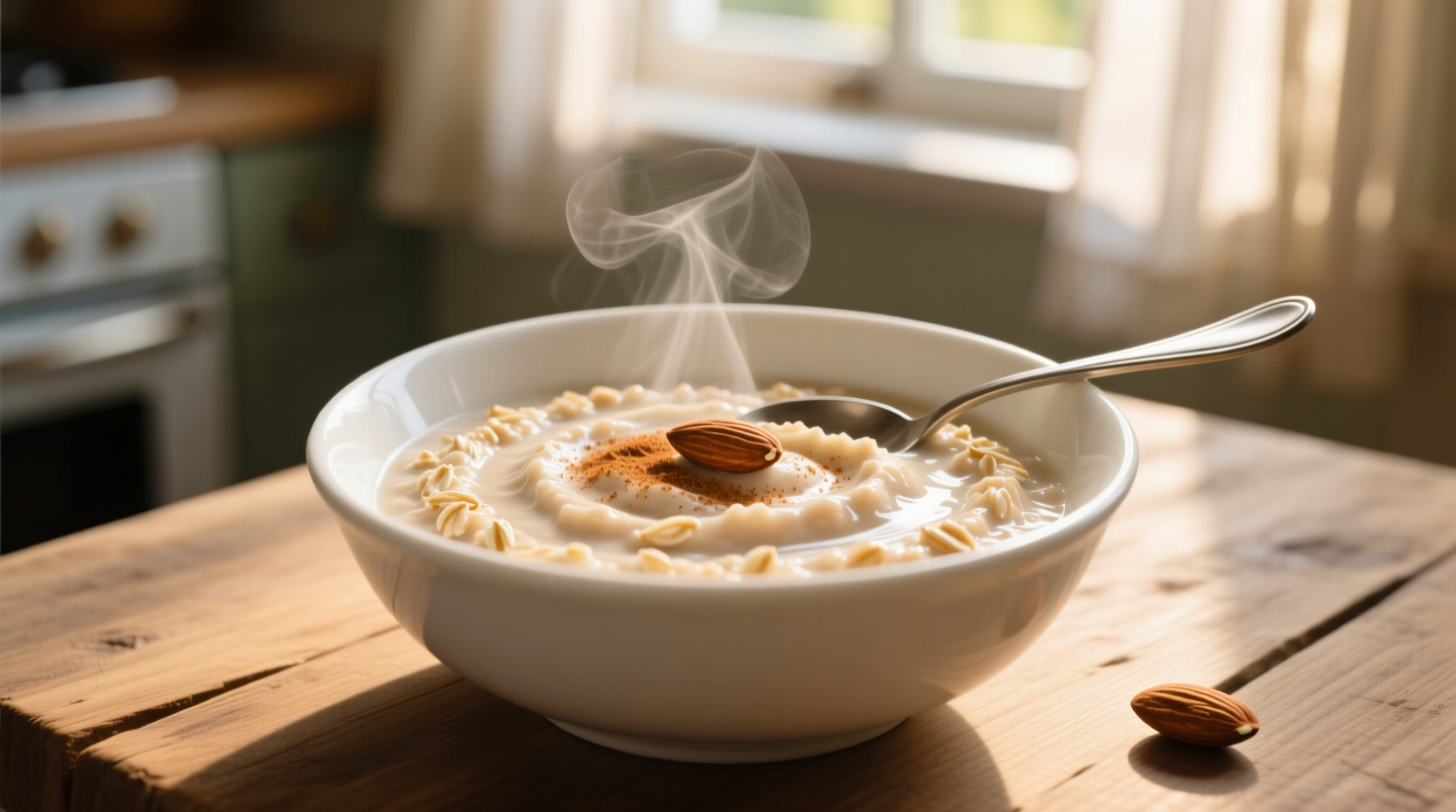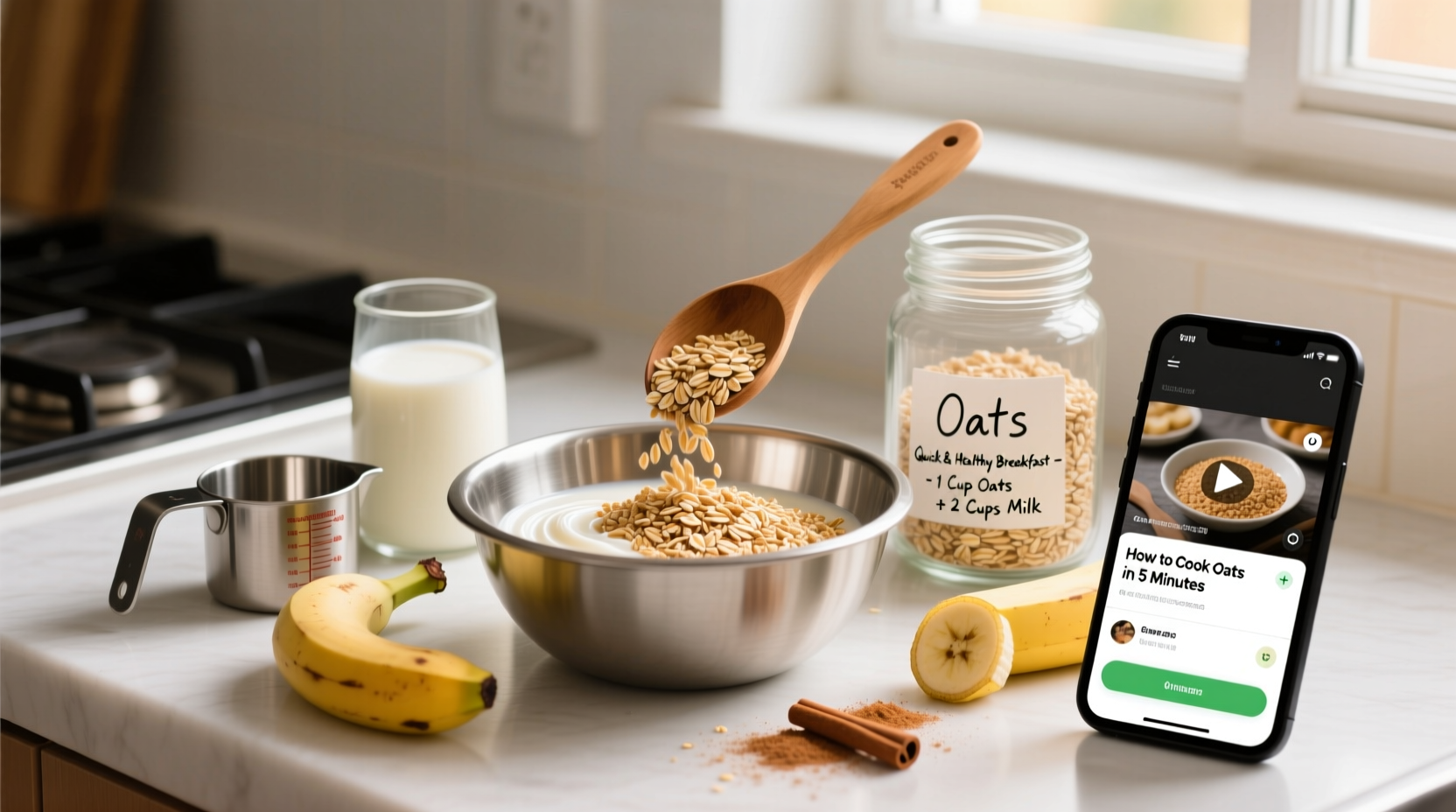Perfectly cooked oats require a 2:1 liquid-to-oats ratio, gentle simmering for 5-15 minutes (depending on oat type), and minimal stirring. For creamy stovetop oats, use 1 cup rolled oats to 2 cups liquid, bring to a gentle simmer, cook 5-7 minutes while stirring occasionally, then rest covered for 2 minutes. This method yields consistently creamy, non-mushy results every time.
The Complete Guide to Cooking Perfect Oats Every Time
Whether you're rushing through your morning routine or savoring a leisurely weekend breakfast, mastering oat preparation transforms this humble grain into a versatile, nutritious foundation for countless meals. Forget gluey, undercooked, or burnt results—understanding the science behind oat hydration and gelatinization unlocks restaurant-quality texture at home.
Why Your Oats Keep Turning Out Wrong (And How to Fix It)
Oats fail when liquid ratios are incorrect, heat is too high, or cooking times don't match the oat variety. Steel-cut oats need 20-30 minutes simmering, while instant varieties require mere minutes. The critical mistake? Treating all oats the same. Each variety has unique starch structures requiring specific hydration timelines.
| Oat Type | Cooking Time | Texture Profile | Best For |
|---|---|---|---|
| Steel-Cut | 20-30 minutes | Chewy, nutty | Hearty breakfasts, savory applications |
| Rolled/Old-Fashioned | 5-7 minutes | Creamy yet textured | Classic oatmeal, baking |
| Quick-Cut | 3-5 minutes | Soft, uniform | Busy mornings, smoothies |
| Instant | 60-90 seconds | Mushy if overcooked | Emergency breakfasts |
Essential Tools You Already Own
No special equipment needed—just a medium saucepan with heavy bottom (prevents scorching), wooden spoon, and measuring cups. For microwave cooking, use a deep microwave-safe bowl at least three times taller than your liquid level to prevent boil-overs. The USDA recommends using food-safe containers to maintain nutritional integrity during cooking.
Step-by-Step: Foolproof Stovetop Method
- Measure precisely: Use 1 cup (80g) rolled oats to 2 cups liquid (water, milk, or blend)
- Bring liquid to near-boil: Heat until small bubbles form at edges (190°F/88°C)
- Add oats gradually: Sprinkle while stirring to prevent clumping
- Maintain gentle simmer: Bubbles should break surface slowly, not vigorously
- Cook 5-7 minutes: Stir only 2-3 times to preserve texture
- Rest covered: Remove from heat, wait 2 minutes for residual steam to finish cooking

Avoid These 3 Common Mistakes
- Over-stirring: Agitation breaks down starches, creating gluey texture (Cornell Food Science Department confirms excessive stirring increases viscosity beyond ideal)
- Incorrect heat: High heat causes rapid water absorption then scorching—always use medium-low
- Adding salt too late: Salt at beginning enhances flavor penetration; add 1/8 tsp per cup liquid
When to Choose Alternative Methods
Consider your time constraints and desired outcome:
- Overnight oats: Ideal for make-ahead breakfasts (combine 1/2 cup oats + 2/3 cup liquid + 1 tsp chia seeds, refrigerate 8+ hours)
- Pressure cooker: Perfect for steel-cut oats (1:3 ratio, 3 minutes high pressure)
- Double boiler: Best for delicate dairy-based preparations to prevent scorching
The Harvard T.H. Chan School of Public Health notes that cooking method affects glycemic response—slow-cooked oats have lower glycemic index than instant varieties, making them preferable for blood sugar management.
Flavor Building Blocks
Elevate basic oats with strategic additions:
- During cooking: Pinch of sea salt, cinnamon stick, or vanilla bean
- At finish: 1 tsp butter or coconut oil for creaminess (food scientists confirm fat enhances mouthfeel)
- Toppings: Fresh fruit adds natural sweetness without spiking blood sugar like processed sugars
Nutritional Powerhouse, Properly Prepared
A 1/2 cup serving of cooked oats provides 150 calories, 5g fiber, and 6g protein according to USDA FoodData Central. Cooking with milk instead of water increases protein content by 30% while maintaining the soluble fiber that helps reduce LDL cholesterol, as verified by American Heart Association research.
Storage and Reheating Secrets
Cooked oats keep refrigerated for 5 days in airtight containers. For perfect reheating:
- Add 2 tbsp liquid per cup oats before microwaving
- Heat in 30-second intervals, stirring between
- Finish with fresh toppings—reheated fruit becomes mushy











 浙公网安备
33010002000092号
浙公网安备
33010002000092号 浙B2-20120091-4
浙B2-20120091-4